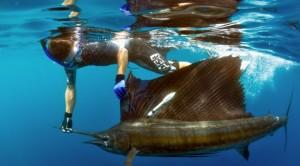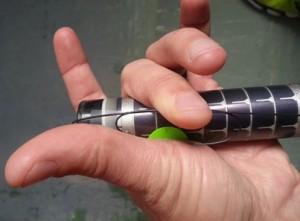Our oceans are extremely vast. It is estimated that anywhere from 50-80% of all life on earth is found in them, and approximately 99% of the living space on the planet are within the oceans. There are so many creatures, as well as plant life, that have remained undiscovered, and so much that we do not yet understand about the natural habits of much of the world’s marine life. In fact, it is estimated that we have only identified approximately 10-15% of all the species that inhabit the oceans of the world.
 This is why the tracking of such species are so very important. A company called Desert Star Systems, has utilized 3D printing to create their new Sea Tag animal tag technology. There are thousands of possible species that biologists have the potential of tagging in order to track the animals habits, and gather specific information on the animals in order to better understand their behaviors. Because of the immense number of different types of species, there are all different shapes and sizes of possible tags that could be produced. What Desert Star Systems has done is use 3D printers to customize their tagging system for specific species of sea life.
This is why the tracking of such species are so very important. A company called Desert Star Systems, has utilized 3D printing to create their new Sea Tag animal tag technology. There are thousands of possible species that biologists have the potential of tagging in order to track the animals habits, and gather specific information on the animals in order to better understand their behaviors. Because of the immense number of different types of species, there are all different shapes and sizes of possible tags that could be produced. What Desert Star Systems has done is use 3D printers to customize their tagging system for specific species of sea life.
They have managed to use the latest technologies to design new tags, make adjustments on CAD software, and then quickly print out prototypes and molds using a variety of different 3D printing methods such as laser sintering, and fused deposition modeling. The results have been a state of the art tagging system which can go to further depths, last longer, and gather more information.
Prototyping with 3D printing has absolutely helped us discover unknown problems and subsequently fix them,”said Thomas Gray of Desert Star Systems. “It’s significantly less expensive to have 3D printed
parts initially. It ultimately saves time, money, and re-work. With the ability to physically hold a prototype in your hand, you get a real world feel that no CAD software provides.
With the help of 3D printers in all fields, it seems like science may be benefiting the most. Discuss Desert Star’s utilization of 3D printing here: https://3dprintboard.com/showthread.php?1534-Desert-Star-Systems-3D-Printing-Sea-Life-Tracking-Devices
Subscribe to Our Email Newsletter
Stay up-to-date on all the latest news from the 3D printing industry and receive information and offers from third party vendors.
You May Also Like
NSF Awards Kentucky $1M for Advanced Manufacturing
The National Science Foundation has awarded a $1 million grant to the University of Louisville for the Advancing Manufacturing and Building Construction Technologies (NSF AMT) project. This initiative is part...
3D Printing News Briefs, May 11, 2024: 3D Printed Stent, Tower, Sculptures, & More
We’re starting off with medical research in today’s 3D Printing News Briefs, as researchers in Korea used CT images and 3D printing to fabricate an educational simulator for a mastoidectomy....
3D Printing Unpeeled: Wind Turbines, Probiotics and Lenses
TPI Composites, ORNL and Ingersoll Rand are working to make wind turbine tooling segments that can be 18.3 meters long. These elements also include resistive wires that help keep the...
Tethon 3D Releases Cost-effective Bioprinter
Tethon 3D, known for its ceramic-loaded DLP materials, custom resins, and DLP 3D printers, has recently released a bioprinter. Vat polymerization printers like DLP systems have been widely used by...
































